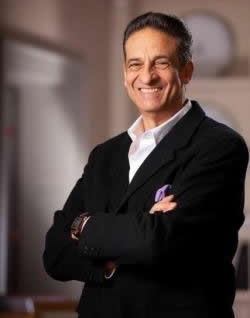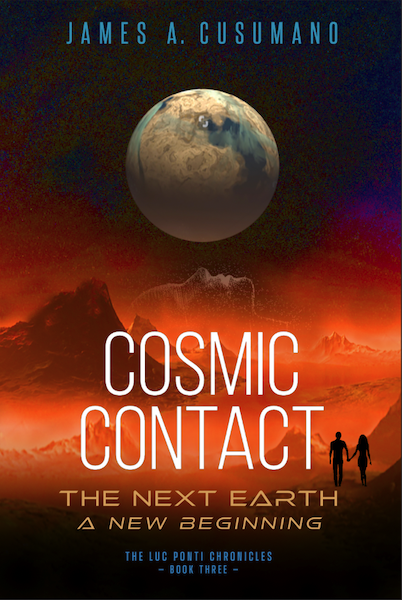“Inept” Student Wins Nobel Prize!

“Live as if you were to die tomorrow.
Learn as if you were to live forever.”
- Mahatma Gandhi
KEY CONCEPTS
-
Parents and educators must guide children in the discovery of their fundamental Essence—that special thing that they do well and love to do.
-
Their Essence is what leads them to their Life Purpose, and ultimately long-term personal Fulfillment and Happiness.
-
Young John Gurdon—and the world—nearly faced a travesty when an educator discouraged him from discovering his Life Purpose.
-
John ultimately succeeded due to the support of his parents and his personal tenacity.
-
John’s journey is a perfect example of how to find long-term Fulfillment and Happiness.
* * *
An Unfortunate Beginning
Fifteen-year-old John Gurdon was mulling over one of the most challenging questions each of us confronts one time or another, “What should I do with my life? He thought for some time and ultimately concluded, “I would love to be a scientist.” At the time John was a student at Eton Boarding School, a high school near Windsor, England. Then he received his report card. Here’s what his science teacher had to say about his capabilities in biology:
“It has been a disastrous half. His work has been far from satisfactory. His prepared work has been badly learned, and several of his test pieces have been torn over; one such piece of prepared work scored 2 points out of a possible 50. His other work has been equally bad, and several times he has been in trouble, because he will not listen, but insists on doing his work in his own way.”
“I believe he has ideas about becoming a scientist. On his present showing this is quite ridiculous, if he can’t learn simple biological facts he would have no chance of doing the work of a scientist, and it would be a sheer waste of time, both on his part, and of those who have to teach him.”
That year, John placed 250th out of 250 students and his total number of points for the semester was 231 out of a possible 550 points, a mere 42 percent. Thereafter, he was not allowed to study any of the sciences for the remainder of his stay at Eton.
BUT—John Gurdon, the apparent “inept” high school student eventually received a university degree in zoology and went on to win the 2012 Nobel Prize in Physiology & Medicine. How was that possible?
A Scholarly Journey
For 25 years, John was a Fellow at Churchill College at Cambridge University. As a former Foreign Fellow at Churchill College myself, John’s life story has always interested me, as it provides insight on discovering and pursuing your Life Purpose, and the absolute necessity to uncover your fundamental strengths and eventually connect them with a need in the world in order to find your purpose.
For John’s remaining time at Eton, since he was not allowed to pursue any further science courses, he instead studied Homer and other Greek and Latin scholars. He learned their works and translated them into English, something he enjoyed to some extent, but he wasn’t very good at it. His real love, which began to blossom towards the end of his stay at Eton, was science, just as he had thought a few years earlier when taking biology. In his free time, he studied insects and plants as a hobby. John was determined to find a way into science.
Never Give Up
Because of his poor showing at Eton, John was barely accepted at Oxford University, where he was advised to study any other topic but the Classics, for which he had taken the entrance exam. This didn’t disturb John as his interest in science, and particularly in entomology, was rapidly growing. With some difficulty, he eventually persuaded the administration to allow him to pursue a degree in zoology.
After graduation, John applied to study for his PhD at Oxford in entomology but again was rejected. He was, however, accepted as a PhD candidate in embryology. This course of events changed his life.
His professor assigned him the challenging task of determining whether all the different cells in the body had the same set of genes. At the time, the common wisdom was that this was highly unlikely. John was immensely attracted to his thesis topic and dug in with great enthusiasm and passion.
He had found the beginnings of his Life Purpose. “If I can shed some light on this topic, perhaps it will have an impact on our understanding of the human genome and the life process,” he pondered. And indeed, it did have an impact.
Life’s Mystery Unfolds
Life begins when a fertilized egg divides and forms new cells, which in turn continue to divide. All these cells are identical at the beginning of this process, but as the life process proceeds, they become highly specialized into, for example, nerve cells, heart cells, brain cells, etc. At the time scientists were convinced that after these cells became specialized, there was no way they could ever return to their original state. John showed this to be incorrect, and his work led to cloning, and has had a major impact on the possibilities for human in-vitro fertilization—a godsent for couples with challenges having children.
Briefly—in his Ph.D. research, John extracted the nucleus of a fertilized frog egg, and he replaced it with the nucleus of a mature specialized cell from a tadpole’s intestine. This new “hybrid” cell actually grew into a frog and in doing so, John proved that mature highly specialized cells still contain all of the genetic information required to form all types of cells and therefore, a fully-formed species like a frog—or a human being![i]
John’s work not only had important implications for cloning and in-vitro fertilization without the need to use embryo stem cells but also formed the basis for developing techniques to treat many challenging diseases.
Another of our colleagues at Churchill College, Dr. Robert Edwards, who pioneered in-vitro fertilization using many aspects of John Gurdon’s work, in 1978 produced the first “test-tube” baby, Louise Joy Brown, born in England.
The Thrill of Life Purpose
The process by which John Gurdon found his Life Purpose is similar to what I described in BALANCE: The Business-Life Connection.[ii] At the age of 15, at a very basic level, John knew what he wanted to do with his life. He wanted to be a scientist; he had found his Essence. But at Eton Boarding School, he had a difficult time bringing this interest to the surface. And, he wasn’t particularly helped by his science teacher, who wrote him off as a “lost cause.”
This is exactly the point where John needed one of those “giants” we often meet during our life journey to help him discover the skills he was good at and loved to do, and to coach him. Receiving just the opposite from his science teacher, he rebelled as teenagers can do, and insisted on doing biology his own way. The result was the teacher’s retribution, and the loss was John’s—and nearly the world’s, as well!
John said that the role of the “giants” at the early stages of his life was played by his two dedicated parents. They encouraged him to carry on and pursue his emerging interests in science. Once, he fully recognized this interest and his own innate capabilities, he next identified a project—a Need—which if successful, could eventually make a positive difference in the world.
This led to John’s intense Passion to solve this seemingly impossible problem. And as is always the case under such circumstances, there is a creation of great physical and emotional Energy, which enabled him to apply the huge level of creative effort necessary.
Furthermore, under these conditions of low stress and deep passion, communication between the left and right hemispheres of the brain became open and facile and led to high Creativity, well beyond that which is normally experienced. John was able to successfully address difficult problems. This fostered Innovation and enabled him to address challenges most people thought unsolvable.
Consequently, he experienced a Reward. In this case, it was opportunities for more exciting academic positions and eventually, the emotional and financial reward that came with winning the Nobel Prize, currently worth $1.1 million. John never set out to make a lot of money; the money came as a result of him following his Dream.
As explained in BALANCE[iii], this Reward leads to Gratefulness, which is the source of lasting Fulfillment and Happiness. John’s journey took the following path:
Essence-->Need-->Life Purpose-->Passion-->Energy-->Creativity-->Innovation-->Reward-->Gratefulness-->FULFILLMENT & HAPPINESS
Lessons Learned
John Gurdon began to see the seeds of his deep interest in science at age 15. However, his science teacher was not only ineffective in helping him; he drove him in the opposite direction. Instead of helping John understand his fundamental Essence and assisting him in digging deeper to pull it out of his consciousness, he nearly irreversibly crushed his burgeoning interest in science. The message here is for educators to spend time helping students understand their interests and exposing them to the possibilities of how to express these interests and what may be their potential.
John, fortunately, had two parents who played the role of “giants” in his life by encouraging him to dig into his interests in science and pursue them, believing that he would eventually find clarity as to the direction to follow.
But there was another major factor in the equation. John never stopped asking the questions: What am I good at and love to do? How can I make a difference in the world with my skills? And though he did not immediately know the answers to these questions, he was patient and believed that he would eventually move into the answers. And he did—big time!
Do what you love and love what you do!
Enjoy your journey, make a difference!

Chairman & Owner, Chateau Mcely
[i] "Sir John B. Gurdon - Facts". Nobelprize.org. Nobel Media AB 2013. Web. 23 Apr 2014. http://www.nobelprize.org/nobel_prizes/medicine/laureates/2012/gurdon-facts.html
[ii] James A. Cusumano, BALANCE: The Business—Life Connection, SelectBooks, New York City, 2013. Published in Czech in October 2013 by Fortuna Libri.
[iii] Ibid.

